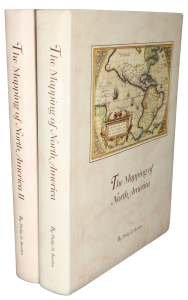Rare Maps and Prints
- World & Celestial
- North America
- West Indies, South & Central America
- British Isles
- British Isles
- English counties
- Large-scale
- Bedfordshire
- Berkshire
- Buckinghamshire
- Cambridgeshire
- Cheshire
- Cornwall
- Cumberland
- Derbyshire
- Devon
- Dorset
- Durham
- Essex
- Gloucestershire
- Hampshire
- Herefordshire
- Hertfordshire
- Huntingdonshire
- Islands
- Kent
- Lancashire
- Leicestershire
- Lincolnshire
- Middlesex
- Norfolk
- Northamptonshire
- Northumberland
- Nottinghamshire
- Oxfordshire
- Rutland
- Shropshire
- Somerset
- Staffordshire
- Suffolk
- Surrey
- Sussex
- Warwickshire
- Westmoreland
- Wiltshire
- Worcestershire
- Yorkshire
- Wales
- Scotland
- Ireland
- Western Europe
- Eastern Europe
- Middle East
- Africa
- Asia
- Australasia & Pacific
- Decorative Prints
- Title Pages
Mr. Philip D. Burden
P.O. Box 863,
Chalfont St. Giles, Bucks HP6 9HD,
UNITED KINGDOM
Tel: +44 (0) 1494 76 33 13
Email: enquiries@caburden.com
The bibliography of this book is complicated. The first clear evidence for the project appeared in January 1788, when William Bray described it as ‘a work which he is now publishing in numbers, being a map and description of the road from London to Brighthelmstone, taking in a good deal of the adjacent country’ (‘Archaeologia’ 9 (1789) p. 106). It appears that it can consist of three different publications. ‘A Companion from London to Brighthelmston’, the ‘Description of Southwark, Lambeth, Newington …’ and sometimes the ‘Tabulae Distantiae’, 1789. The ‘Companion’ is made up of two Parts, the first according to Upcott should consist of 32 pages. Both are present here as is the ‘Description of Southwark …’ The ‘Tabulae Distantiae’ however is omitted. The whole is completed by a six-page list of subscribers including many notable individuals such as Sir Joseph Banks.
The plate collation is even more varied. The ‘set’ of 9 numbered plates of the route from London to Brighton appear to lack number 4. These are all orientated to the east and are variously dated between 1787 and 1800. Where identified the engraver is Edwards himself. These are supplemented with plans of South London, Lewes and New Shoreham. The title page doubled as an advertisement for the work, and calls for an additional section: ‘Tabulae Distantiarum’, not present in this copy. The detail of that found on the roads is truly amazing. Page 11 of the second part describes the home of Henry Cavendish, the scientist, on Clapham Common as ‘the seat of Hon. Henry Cavendish. It is a tolerable good house, built with red brick. In a paddock at the back of the house is a mast of a ship, erected for the purpose of making philosophical experiments’. The figures in the columns to the left side give the exact distances which Edwards gives for each property. This gives the distance from London, in miles, quarter-miles and rods. A rod is 5½ yards and there are 320 rods in a mile, making 80 in a quarter-mile. The miles are recorded in roman numerals, with Arabic recording the quarter-miles and rods.
Provenance: bookplate of Sir George Warren, K.B. (1735-1801) pasted inside front cover; Phillips Auctions 14 May 1992 lot 197; private English collection. Fordham (1924) p. 45; Giles, Phyllis ‘The Last of the Warrens: Sir George Warren, K.B. (1735-1801)’; Kingsley (1982) App. VII no. 3; Tooley’s Dictionary (1999-2004); Upcott (1968) pp. 1217-9; Worms & Baynton-Williams (2011).
A Companion from London to Brighthelmston, in Sussex; Consisting of a Set of Topographical Maps from Actual Surveys, On a Scale of Two Inches to a Mile
SOLD








